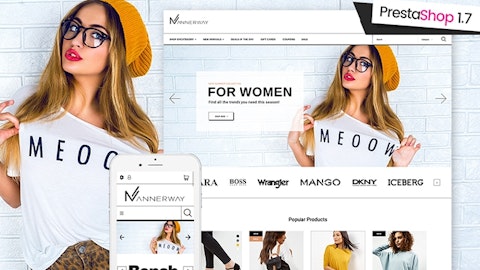Matt Baer: Yeah, Aneesha, appreciate the question and happy to provide a little bit more context. And what I would do is I would reference back to what I mentioned in this conversation as well as on our last earnings call. And that’s just how judicious we’re being in terms of where we’re spending our marketing dollars. So the customers or the clients that we do acquire are those that are going to deliver a high lifetime value. And I’ve been witness to organizations or practices where chasing short-term revenue growth or short-term client acquisition. And if you’re doing that without a really firm conviction that those clients are going to deliver a high lifetime value for you, that becomes a losing proposition. And as I and David just mentioned, we are seeing some promising signs in terms of those newer clients that we have acquired.
But it’s also early innings there and we want to continue to be judicious and be methodical in terms of that spend. As I’ve onboarded into Stitch Fix, I’ve also learned more and more about the uniqueness of our business model. And it’s one that’s different from traditional e-commerce in many ways, as you know. And in this particular instance, I think the relevant context is that when you’re going out in traditional e-commerce to acquire new clients, you’re often thinking about it at a transactional level. Even some of the largest retailers out there are acquiring every single visit and every single purchase from even their most loyal clients. For us, we have that really unique competitive advantage in the differentiation of our business model such that when we acquire the right client, we get organic re-engagement over the long term from them.
You see that in terms of where our media or marketing investment has been relative to the client results that we just spoke to. In other retailers, you’re normally going to see that from a one-to-one degradation standpoint in terms of your reduction in [media] (ph) and reduction in client count. For us, we have that benefit where once we get the right client on board and they get a fix and they’re happy with that, a subsequent fix, another fix, we get that organic re-engagement, that organic recurring revenue stream. But it also takes time to ensure that investment is fully optimized, as that occurs over a period of several months as opposed to something that you’re able and other e-commerce businesses able to assess you know in much closer to real time.
So we’re going to make sure and to continue to be judicious, continue to be methodical and we are encouraged by these early results and we’ll continue to build on those and invest into those into the future as we see appropriate.
David Aufderhaar: Aneesha, just to add one more data point. On sort of the dormancy side of active clients, we expect similar levels of dormancy from a client perspective. And I think I touched on this earlier, but as we said on some of the prior calls, we saw a dip in first fix engagement last year, and that’s impacted dormancy results over the last few quarters. Again, early results, but we’re seeing progress here where recent client cohorts, we saw improved first fix outcomes in Q1 with higher retention both quarter-over-quarter and year-over-year. But the challenge with that is dormancy is a lagging metric. So it’s one of those things that’s going to take a little bit for us to see that come through in the overall metrics.
Aneesha Sherman: Okay, that makes sense. And a quick follow up, please. So what is inherently different about the new clients that is making them higher quality? Is it a demographic difference or behavioral difference? Can you give a little bit more color about why you’re seeing this much higher quality in your new client base?
Matt Baer: Yeah, happy to speak to that at a high level. And, David, feel free to add any additional context. So in terms of the new clients that we’ve been acquiring, I think it starts with, again, a conversation we started on the last call is just in terms of how we’re going to market. We have our marketing team that’s really working hard to find the right balance between upper funnel, brand driven messaging that creates the right awareness and consideration for potential clients that we onboard into the system, such that they have an understanding of the service, they demonstrate interest, and when we get them into the onboarding funnel and they become a client of ours, they have a high intent and a high knowledge and level of interest in the service and are more likely to become not just a client that has a first fix shipped to them, but has a subsequent and then a third fix and so forth.
So I think we’ve done a really good job in terms of finding that balance in our media and marketing spend such that we can build awareness, build consideration in the upper funnel, as well as have a really optimized lower funnel programmatic marketing campaign in order to acquire all of those clients towards the bottom of the funnel.
David Aufderhaar: And I think where we’re seeing that in the metrics is the RPAC callout that we talked about earlier, that we are seeing encouraging signs in three month RPAC, and that’s both sides of it. We’re seeing positive signs from new clients who are receiving more fixes in their first few months compared to new clients last year. And, I think we also mentioned that [fixer] (ph) AOV was a strong point for total RPAC as well. And that was driven by hitting a multi-year high in Q1 that helped boost up the three-month RPAC.
Aneesha Sherman: Got it. Thank you.
David Aufderhaar: Yeah.
Operator: [Operator Instructions] Our next question comes from the line of Kunal Madhukar from UBS. Your line is open.



